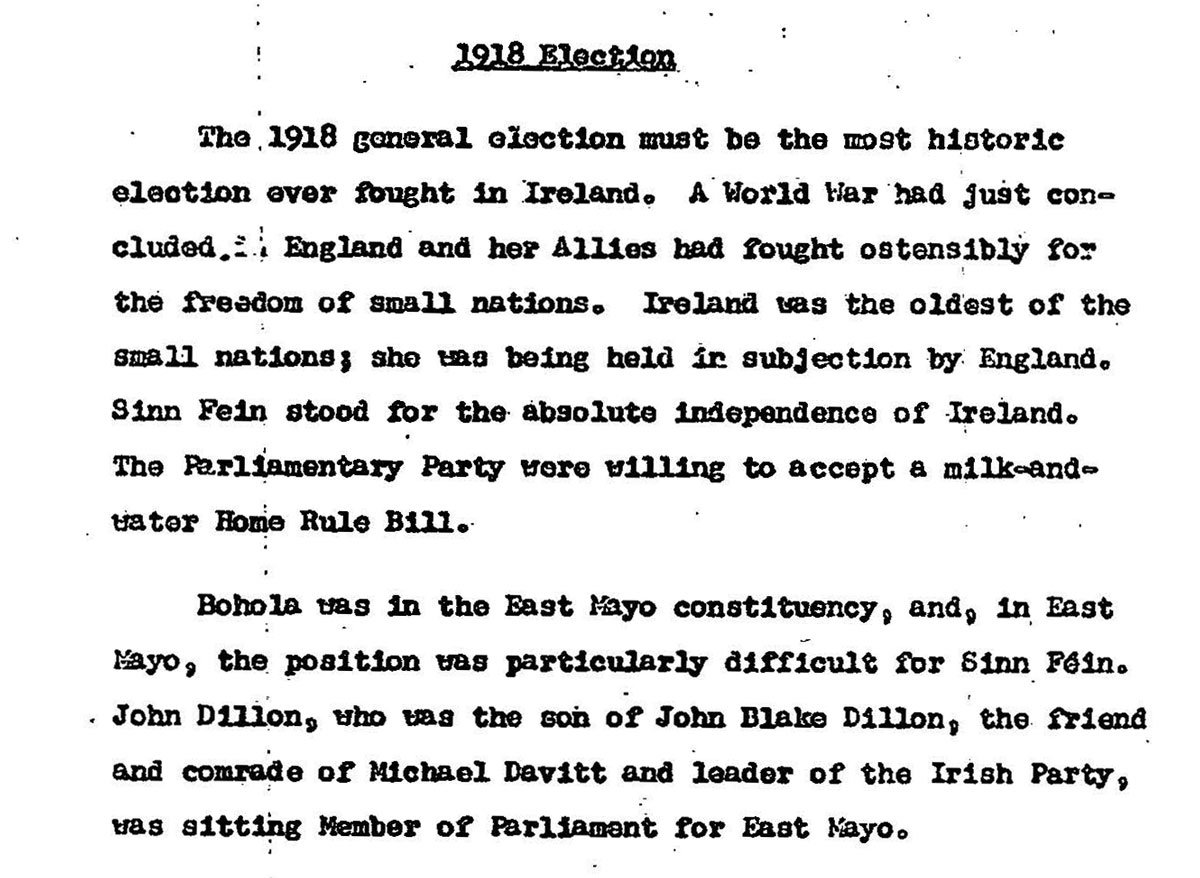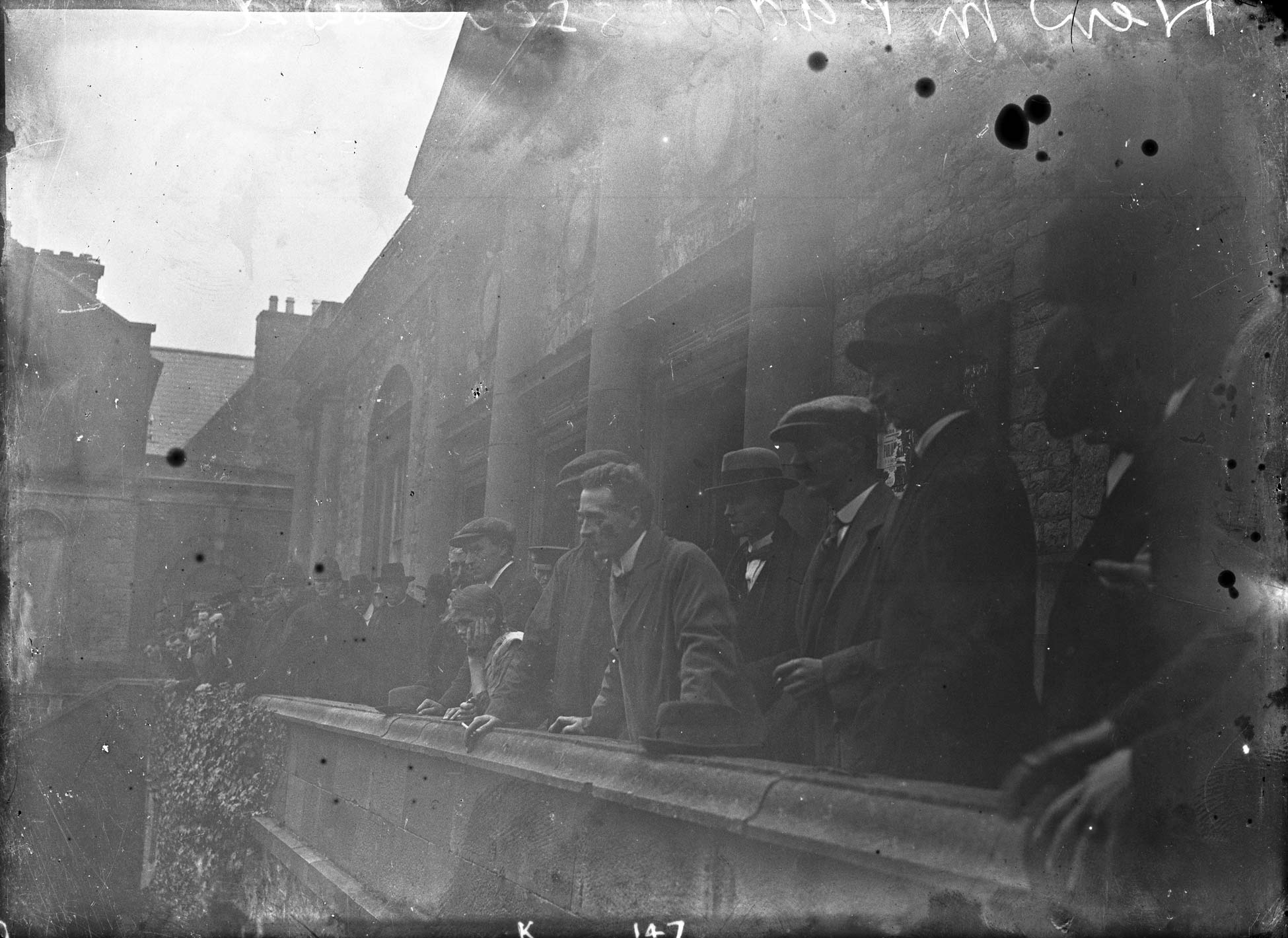Intimidation and disruption mark end to historic election campaign
Carracastle, 9 December 1918 - Yesterday, on the last Sunday before polling day on 14 December, the various parties undertook a final push to rally their supporters. The campaigning was not without incident.
In East Mayo, the Irish Party leader John Dillon will face off against the imprisoned Sinn Féin President, Éamon de Valera. Supporters of the latter were met by flying stones, bottles and missiles in the village of Carracastle when they arrived to hold a meeting after one held by the Irish Party.
The Sinn Féiners arrived by motor car, and one of them, when an attempt was made to pull him from the vehicle, drew a revolver and fired into the air. The police subsequently arrested the pistol bearer rather than his assailants. Two local priests with Sinn Féin sympathies were targeted, with stones being thrown at one of their residences.

IRA Officer Sean Walsh discusses the 1918 general election in his witness statement to the Bureau of Military History. Click here to read his statement in full.
Tempers also ran high in Co. Louth, where the Irish Party’s candidate, Richard Hazelton, was prevented from speaking at Boher, in the Cooley district, by hostile Sinn Féin supporters, who interrupted his address by booing and singing national songs.
‘This is the way Cardinal Logue’s appeal is responded to’, the Irish Party candidate remarked. ‘I know the crowd has been organised to prevent free speech.’
Republicans were also involved in efforts to thwart a rally in Jonesborough in support of Irish Party candidates in South Armagh and Louth, Patrick Donnelly and Mr Hazelton respectively.
A body of Sinn Féiners, approximately 60 strong, marched in military formation and took up positions opposite the speakers platform and proceeded to interrupt the speeches and prevent the speakers being heard. Eventually, the larger group of Irish Party supporters rushed their Sinn Féin opponents, pushing them away from the platform and seizing a number of tricolour flags.
[Editor's note: This is an article from Century Ireland, a fortnightly online newspaper, written from the perspective of a journalist 100 years ago, based on news reports of the time.]





















